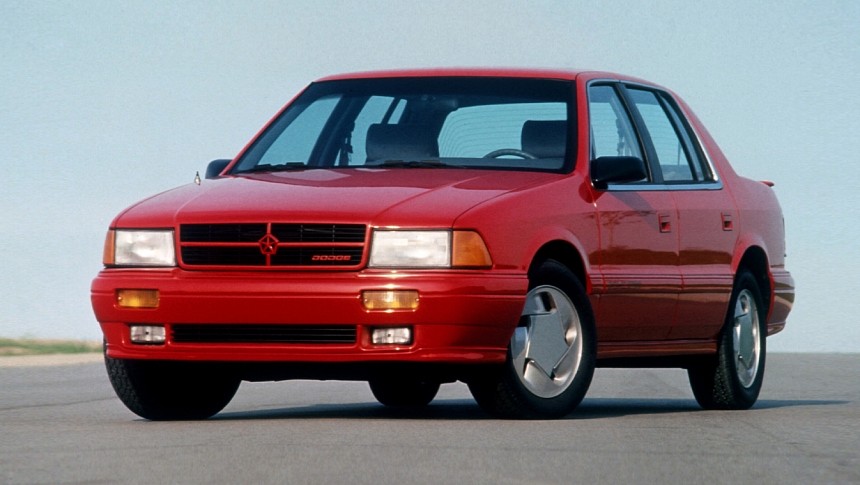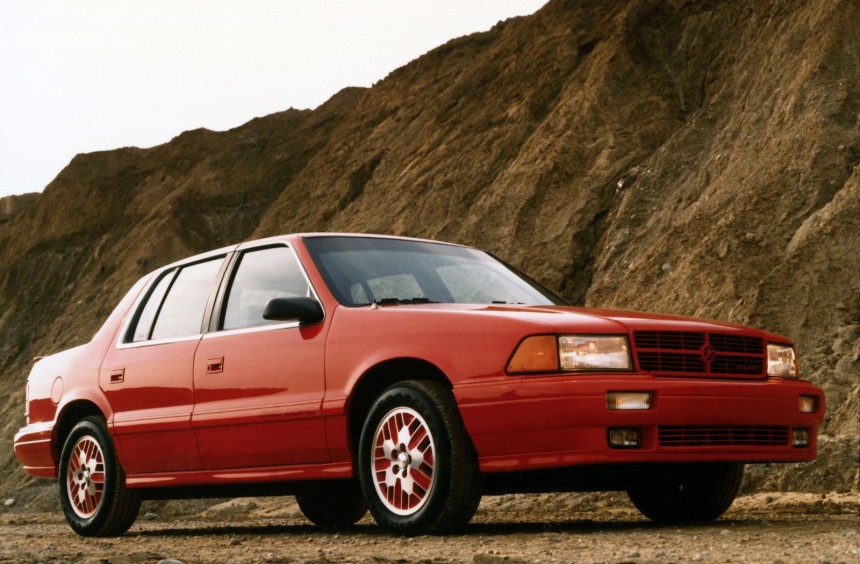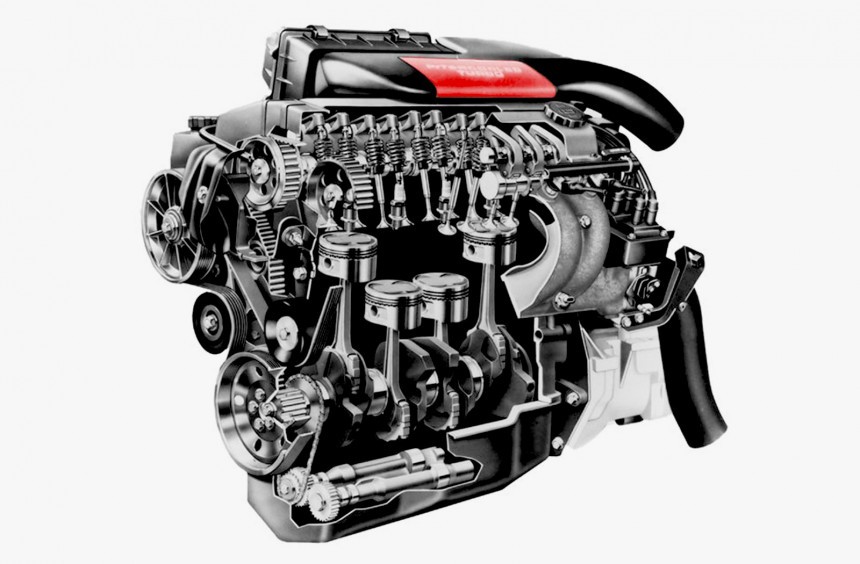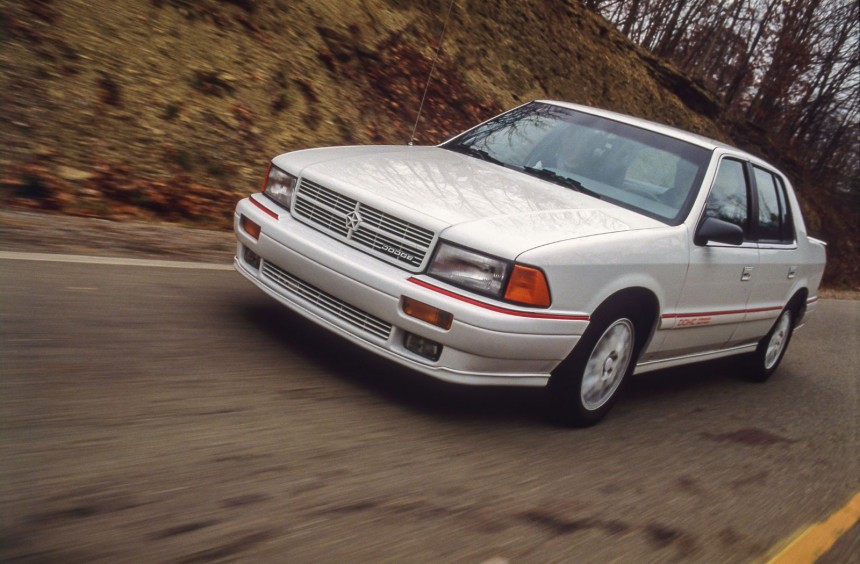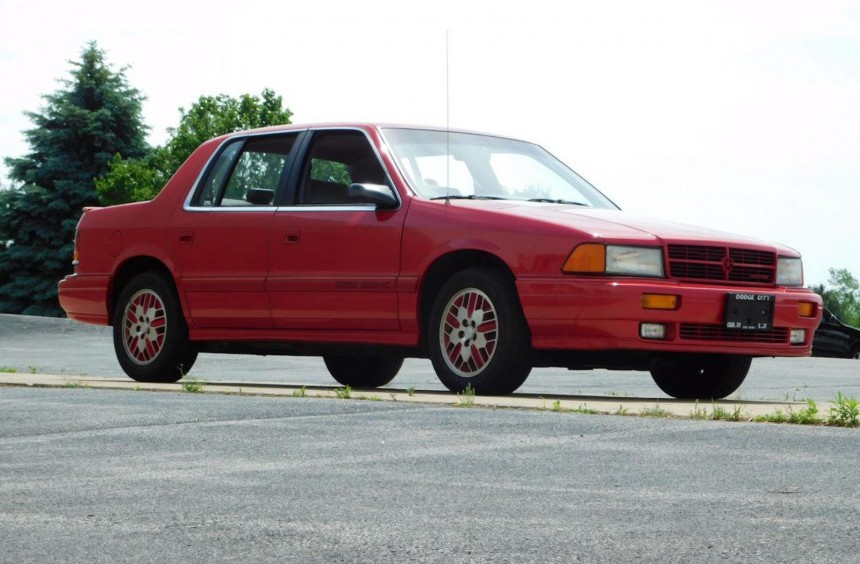Though it looked as painfully boring as the standard Spirit, the R/T hid a surprisingly powerful turbocharged four-cylinder under its hood and could run the quarter mile faster than the E34 BMW M5.
After nearly disappearing in the late-1970s, the Chrysler Corporation (now part of Stellantis) was brought back to life under the stewardship of the legendary Lee Iacocca.
During the 1980s, it experienced about four years of rapid growth, but then sales began to stagnate, and people argued that its brands were delivering increasingly dull vehicles.
While working for Ford, Iacocca learned that the best way to increase a brand's popularity was to inject some performance into the lineup. Therefore, he convinced his close friend Carroll Shelby to help bring excitement back to the Chrysler brands.
Although the engineering legend had limited involvement and more or less only lent his name, the result of this collaboration gave birth to some interesting performances like the Shelby Omni GLH-S, Shelby Lancer, or Shelby Charger GLH-S - all based on plebian Dodge models.
But excitement really came back to the corporation's brands - notably Dodge - when the iconic Viper was introduced at the 1991 Indy 500, with Carroll Shelby behind the wheel. A thoroughbred V10 supercar, it was by far the most groundbreaking vehicle developed by the American automotive industry in several decades.
Apart from the Viper, Dodge also introduced another interesting performance model in 1991. Called Spirit R/T, it was by no means a supercar, but when it hit the streets, it was the fastest American sedan that money could buy.
The standard Spirit, launched in 1989, was a basic and uninspiring mid-size sedan tailored for the masses. Like its main rival, the first-gen Ford Taurus, it came with FWD and an economical four-cylinder as its base engine.
However, those who wanted more performance from an American-made could go to a Ford dealership and buy the Taurus SHO, which came with a potent V6 engineered by Yamaha. The best that Dodge could offer was a Mitsubishi-built V6 capable of only 141 hp, so to fill the gap, the brand developed the Spirit R/T.
Unlike the Taurus SHO, which had some subtle exterior improvements to go with the performance engine, the Spirit R/T looked exactly like its standard sibling. The only feature that gave it away was a set of bespoke 15-inch, two-tone wheels.
But, under the hood, the sedan hid a mighty turbocharged four-cylinder that was just as capable as the SHO V6.
Based on the standard inline-four and displacing only 2.2 liters, the unit at the heart of the R/T, dubbed Turbo III, was the smallest engine available in the Spirit lineup.
Nevertheless, it proved that size doesn't matter by spitting out 224 hp and 217 lb-ft (294 Nm) of torque. That doesn't mean much today, but back then, it was more than what the SHO could make with two extra cylinders.
While Ford enlisted Yamaha to help develop its performance sedan engine, Dodge commissioned Maserati, Hans Hermann, and Lotus to design engine prototypes, eventually choosing to go with the latter's proposal.
To keep manufacturing costs low, Lotus engineers used the architecture of the existing 2.2-liter K engine and designed an all-new DOHC valve cylinder head. Moreover, the engine received a Garrett turbocharger equipped with an intercooler, enabling it to make so much power out of an otherwise lackluster architecture.
Apart from the Turo III engine, the Spirit R/T came with standard disc brakes on all four wheels and a heavy-duty A568 5-speed manual equipped with a Getrag gearset.
Though it was no BMW in terms of driving experience, the performance sedan was unquestionably fun to drive for a vehicle in that price range. It could have been even better if Dodge upgraded the suspension and steering, but the R/T shared the same underpinnings with the standard Spirit.
Speaking of BMW, the R/T could sprint from 0 to 60 mph (97 kph) in 5.8 seconds, according to a test conducted by Car and Driver, making it quicker than the E34 M5 (6.3 seconds). Moreover, it could run the quarter mile in 14.5 seconds, a full second faster than the Bimmer and half of a second faster than the Taurus SHO.
Motor Trend magazine's "Domestic Sport Sedan of the Year" in 1991 and 1992, the Spirit R/T had a sticker price of $17,820 ($39,691 today), about $5,000 cheaper than the similar Taurus SHO.
Despite being affordable and ridiculously fast, its lack of chassis, bodywork, or interior upgrades made the R/T too much of a sleeper for its own good.
During the 1991 model year, Dodge only sold 1,208 units in the US, followed by a mere 191 examples in 1992 - when it was discontinued.
As performance sedans became more capable during the 1990s, the Spirit R/T was quickly forgotten. Therefore, its value kept decreasing, something that hasn't changed today.
An example in good shape is currently valued at around $7,000, while one in pristine condition, with few miles on the odometer, can go up in the $10,000-$13,000 range.
Though it hasn't aged well and it's currently the cheapest, ugliest early-1990s performance sedan on planet Earth, the Dodge Spirit R/T remains an interesting, grossly underrated factory sleeper that deserves more respect.
Below, you can watch an awesome retro review of the Spirit R/T courtesy of Motor Week.
During the 1980s, it experienced about four years of rapid growth, but then sales began to stagnate, and people argued that its brands were delivering increasingly dull vehicles.
While working for Ford, Iacocca learned that the best way to increase a brand's popularity was to inject some performance into the lineup. Therefore, he convinced his close friend Carroll Shelby to help bring excitement back to the Chrysler brands.
Although the engineering legend had limited involvement and more or less only lent his name, the result of this collaboration gave birth to some interesting performances like the Shelby Omni GLH-S, Shelby Lancer, or Shelby Charger GLH-S - all based on plebian Dodge models.
But excitement really came back to the corporation's brands - notably Dodge - when the iconic Viper was introduced at the 1991 Indy 500, with Carroll Shelby behind the wheel. A thoroughbred V10 supercar, it was by far the most groundbreaking vehicle developed by the American automotive industry in several decades.
Apart from the Viper, Dodge also introduced another interesting performance model in 1991. Called Spirit R/T, it was by no means a supercar, but when it hit the streets, it was the fastest American sedan that money could buy.
A factory sleeper
However, those who wanted more performance from an American-made could go to a Ford dealership and buy the Taurus SHO, which came with a potent V6 engineered by Yamaha. The best that Dodge could offer was a Mitsubishi-built V6 capable of only 141 hp, so to fill the gap, the brand developed the Spirit R/T.
Unlike the Taurus SHO, which had some subtle exterior improvements to go with the performance engine, the Spirit R/T looked exactly like its standard sibling. The only feature that gave it away was a set of bespoke 15-inch, two-tone wheels.
But, under the hood, the sedan hid a mighty turbocharged four-cylinder that was just as capable as the SHO V6.
Plebian engine architecture sprinkled with Lotus magic
Nevertheless, it proved that size doesn't matter by spitting out 224 hp and 217 lb-ft (294 Nm) of torque. That doesn't mean much today, but back then, it was more than what the SHO could make with two extra cylinders.
While Ford enlisted Yamaha to help develop its performance sedan engine, Dodge commissioned Maserati, Hans Hermann, and Lotus to design engine prototypes, eventually choosing to go with the latter's proposal.
To keep manufacturing costs low, Lotus engineers used the architecture of the existing 2.2-liter K engine and designed an all-new DOHC valve cylinder head. Moreover, the engine received a Garrett turbocharger equipped with an intercooler, enabling it to make so much power out of an otherwise lackluster architecture.
Fast, fun to drive, and, best of all, cheap
Though it was no BMW in terms of driving experience, the performance sedan was unquestionably fun to drive for a vehicle in that price range. It could have been even better if Dodge upgraded the suspension and steering, but the R/T shared the same underpinnings with the standard Spirit.
Speaking of BMW, the R/T could sprint from 0 to 60 mph (97 kph) in 5.8 seconds, according to a test conducted by Car and Driver, making it quicker than the E34 M5 (6.3 seconds). Moreover, it could run the quarter mile in 14.5 seconds, a full second faster than the Bimmer and half of a second faster than the Taurus SHO.
Motor Trend magazine's "Domestic Sport Sedan of the Year" in 1991 and 1992, the Spirit R/T had a sticker price of $17,820 ($39,691 today), about $5,000 cheaper than the similar Taurus SHO.
It's much more cheaper these days
During the 1991 model year, Dodge only sold 1,208 units in the US, followed by a mere 191 examples in 1992 - when it was discontinued.
As performance sedans became more capable during the 1990s, the Spirit R/T was quickly forgotten. Therefore, its value kept decreasing, something that hasn't changed today.
An example in good shape is currently valued at around $7,000, while one in pristine condition, with few miles on the odometer, can go up in the $10,000-$13,000 range.
Though it hasn't aged well and it's currently the cheapest, ugliest early-1990s performance sedan on planet Earth, the Dodge Spirit R/T remains an interesting, grossly underrated factory sleeper that deserves more respect.
Below, you can watch an awesome retro review of the Spirit R/T courtesy of Motor Week.
